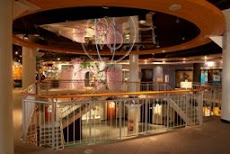 >ANTIBODY
>ANTIBODY VIRUS
The decision to immunize their children is one that all parents must make. Due to the possible side effects, such as autism, some parents do not want to immunize their children. Other parents see this decision as irresponsible and as a threat to the safety of others. In some cases, actually getting a disease, such a chicken pox, could be safer than getting the vaccine because it allows children to naturally build up their immune system without the possible side effects of the vaccine. However, before deciding whether or not to immunize, the danger known as a “super bug” must be taken into consideration. “Super bugs” are viruses and bacteria that have become resistant to vaccines. While this information may seem to favor not immunizing children, those who have not received vaccines are actually at greater risk. Those who have received the vaccine may show mild to moderate symptoms as a result of the super bug, but those who are not vaccinated are more likely to have severe symptoms. Just remember, this is an important decision, so it is wise to understand all available options.
To view a chart of recommended childhood immunization schedule, click here: http://click4biology.info/c4b/11/immunisation.htm










